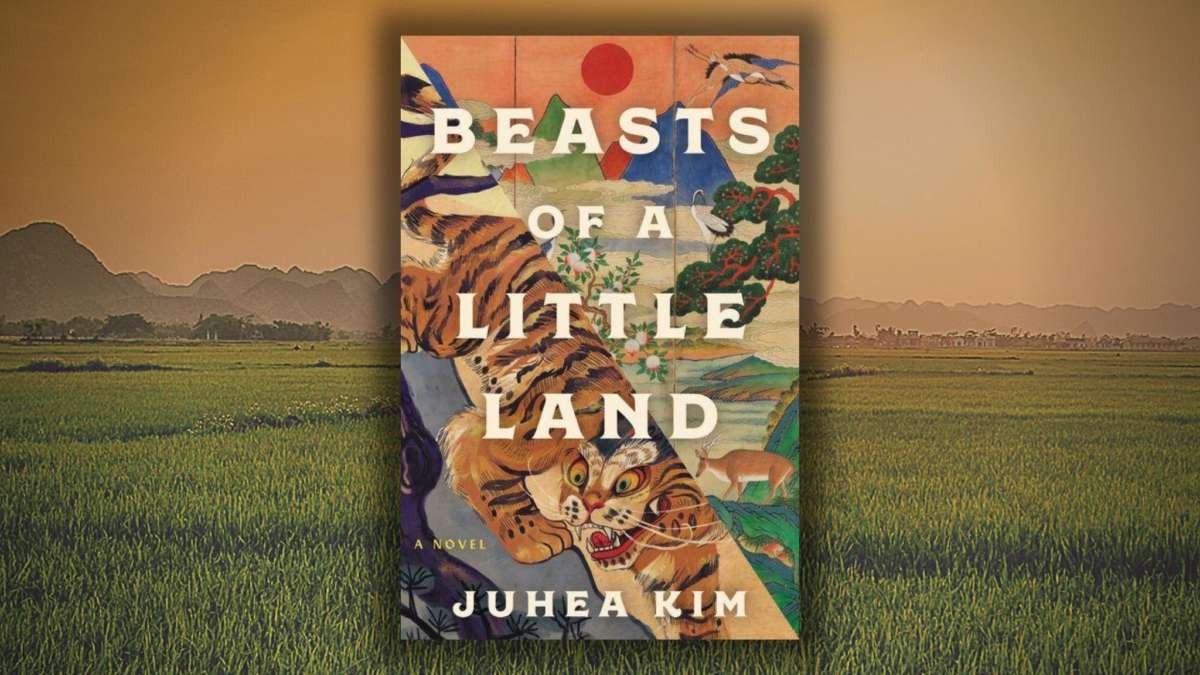The Plot:
Beasts of Little Land by Juhea Kim, has us rewind to 1910 when Japan has annexed Korea. The Japanese Imperial Army has taken control of the Korean people and the resources of their country.
People try to fight oppression from the Japanese invaders who confiscated their land and took control of the rice, sending most of the harvests to Japan. Koreans can no longer afford the rice needed to feed their starving country. Even amid the resulting riots, Japanese Captain Yamada believes Japan’s invasion has brought modernization to Korea, the country that was only good for “rice, tigers, and women.”
In 1918, Jade Anh is 10 years old when her mother takes her to Madame Silver’s school for courtesans in Pyongyang for a job as a laundry maid. Beautiful and elegant Madame Silver has already filled the position, but she offers to take Jade as a courtesan apprentice. Even at her young age, Jade knows what the women do there. “But all things considered, whether it happened for free with one man or for money with many men seemed to be of little consequence, physically speaking. Jade would have been married off in a few years anyway to whoever offered the highest price.”
Madame Silver’s youngest daughter, Lotus, is plain instead of pretty, but her mind is sharp and her voice is beautiful. Jade and Lotus are perfect counterparts. Jade was “observant, intelligent, and hardworking” and Lotus was “spirited, disarming, and confident.” They would only be complete standing together side by side.
Lotus explains the “five arts of a courtesan” to Jade. The girls there are highly educated in arithmetic and languages, and learn the arts of singing, dancing and painting.
When a Japanese major assaults Madame Silver’s oldest daughter, Luna, Madame Silver arranges for the three girls to move to her cousin Dani’s courtesan school in Seoul.
In the same year, 12-year-old orphan Nam JungHo has just lost his father and comes to Seoul from the country. Desperately poor, Nam becomes the chief of all JongRo street children. At 16, he commands 40 street children. When JungHo and Jade’s paths cross, they become fast friends, although he isn’t a socially acceptable companion for Jade.
10 years later, Jade falls in love with rickshaw driver Kim HanChol — a poor young man determined to restore his family to the aristocracy. What appears to be genuine love between them turns into an impossibility when HanChol becomes successful and his family returns to their aristocratic position. It is beneath HanChol to marry a courtesan.
As the characters’ lives intertwine during Korea’s war for independence from Japan, each discovers what they truly want from life and struggles to live with the disappointment of unrealized dreams.
The Vibe and the Art of Storytelling:
In her debut novel, Kim chronicles her characters throughout their lifetimes, with chapters alternating between their individual points of view. She writes her story with Korean history as her backdrop — Korea’s fight for independence from Japan and the courtesan profession. But even more than the historical insights she provides, this literary narrative is a telescopic view of human emotion and motivation — a compelling story of love and loss — written with lyrical and deeply metaphorical prose.
As she explains in her recent essay on Lithub, “I chose to write about early 20th-century Korea because it was a time of an all-out struggle that revealed what we are willing to live and die for; when oppression, violence, and injustice called forth the values of courage, loyalty, and compassion into stark relief. I chose this epoch because it reminded me of our present day when the stakes are, if anything, even higher. My novel is meant to be read as a story about humanity, not just about Koreans living in a distant little land some hundred years ago.”
The Author:
Korean-born Kim moved to Oregon from Korea when she was nine years old and learned early on that “language is power.” She is also a conservationist, and advocate for sustainability and the fight against climate change.
What I Like Best:
Kim reflects how the motivations and emotions of her characters change through time, just like they do for each of us. Her lyrical prose tugs at the heartstrings, causing readers to consider what we will give up to realize our dreams and how far we’re willing to go to achieve happiness.
Opinion:
For fans of far-reaching epic sagas that pinpoint human experience, readers will relish the narrative that chronicles the lives of the characters from childhood through old age, reminding us that although different, our lives are all connected by our fears, hopes and the quest for steadfast love.
This story appears through BookTrib’s partnership with Romo’s Reading Room.
Related Posts:
“Stealing Cinderella:” A Forbidden Relationship in South Korea
8 Novels About Asian Heritage to Celebrate the Lunar New Year
4 Mystery Audiobooks for AAPI Heritage Month




